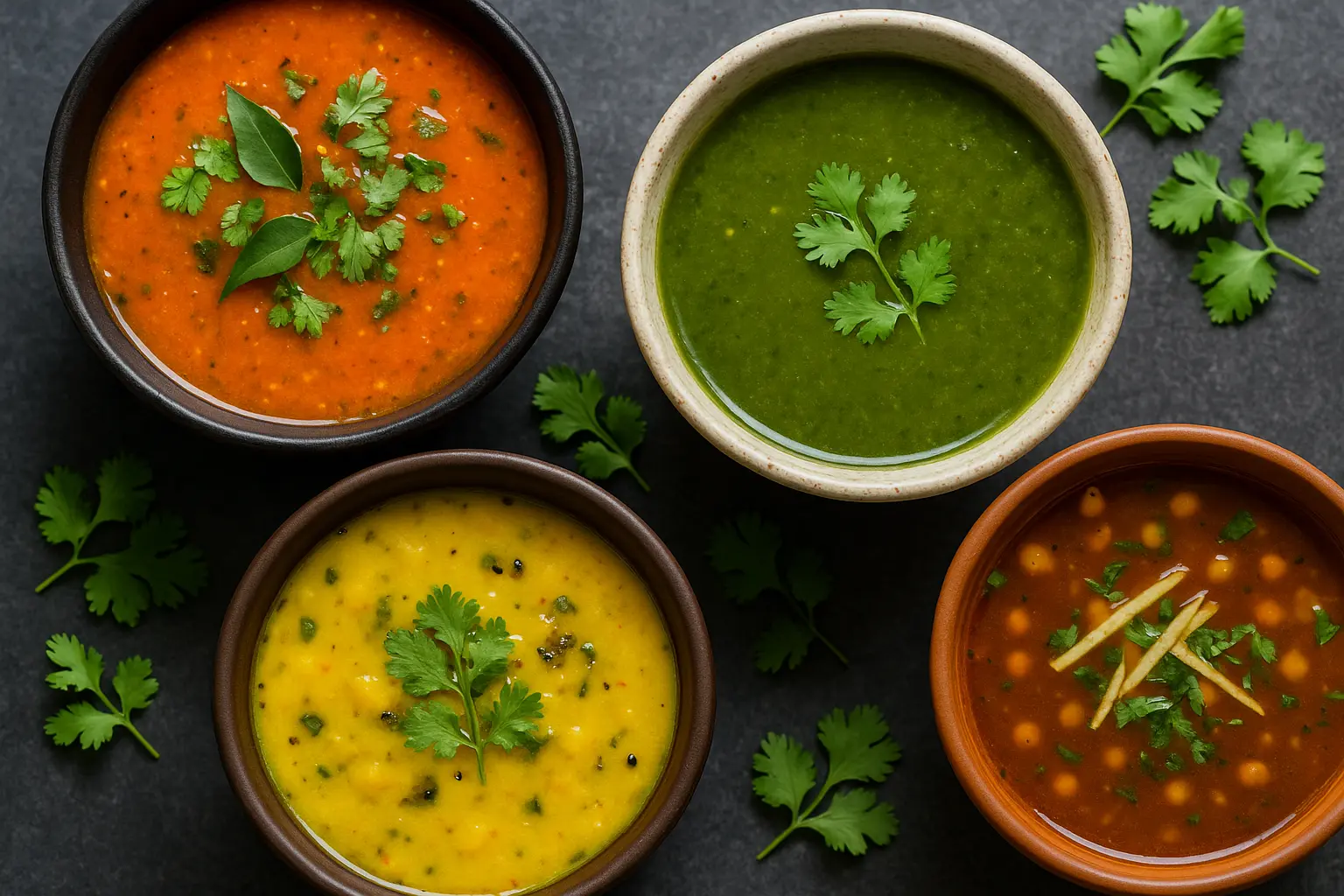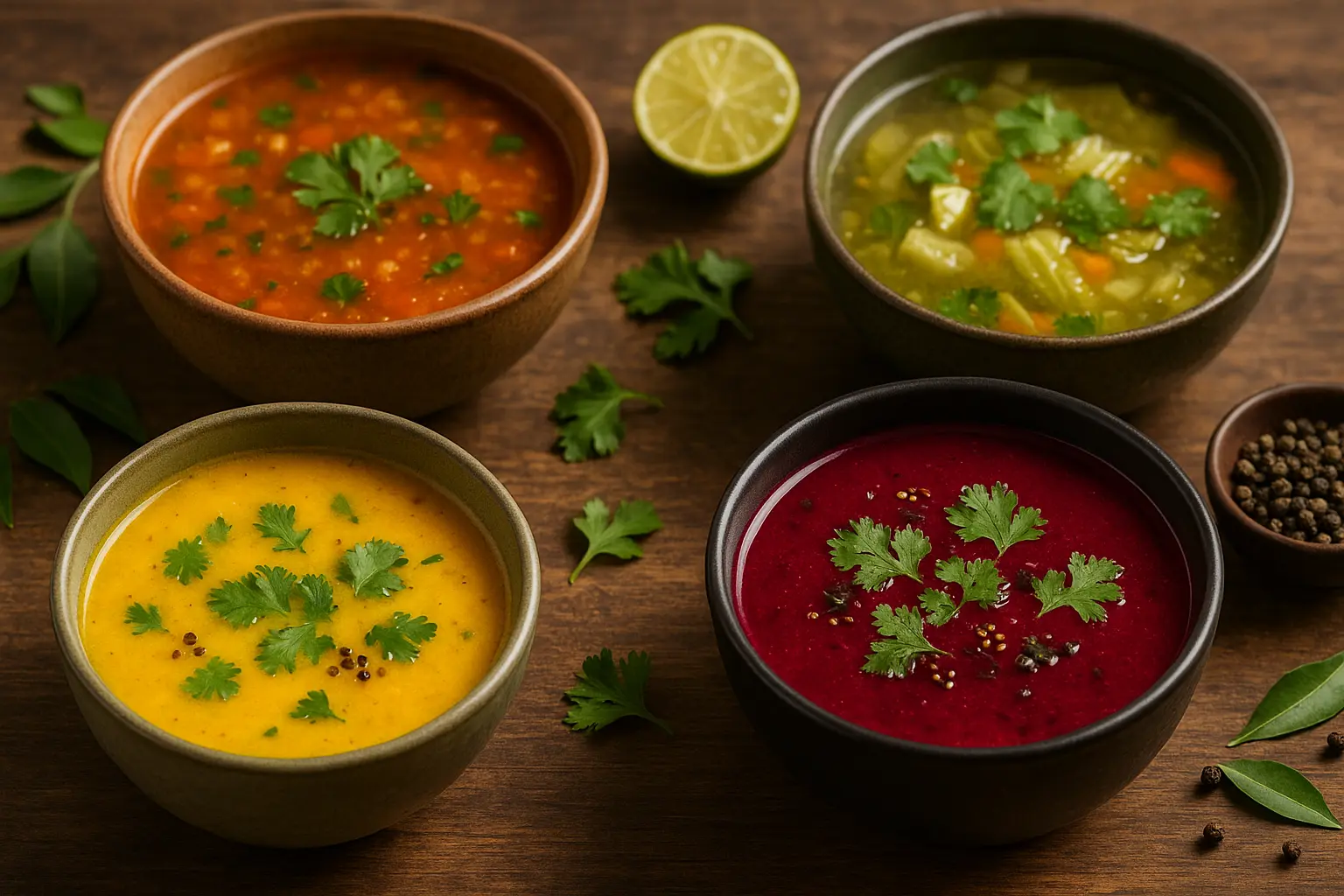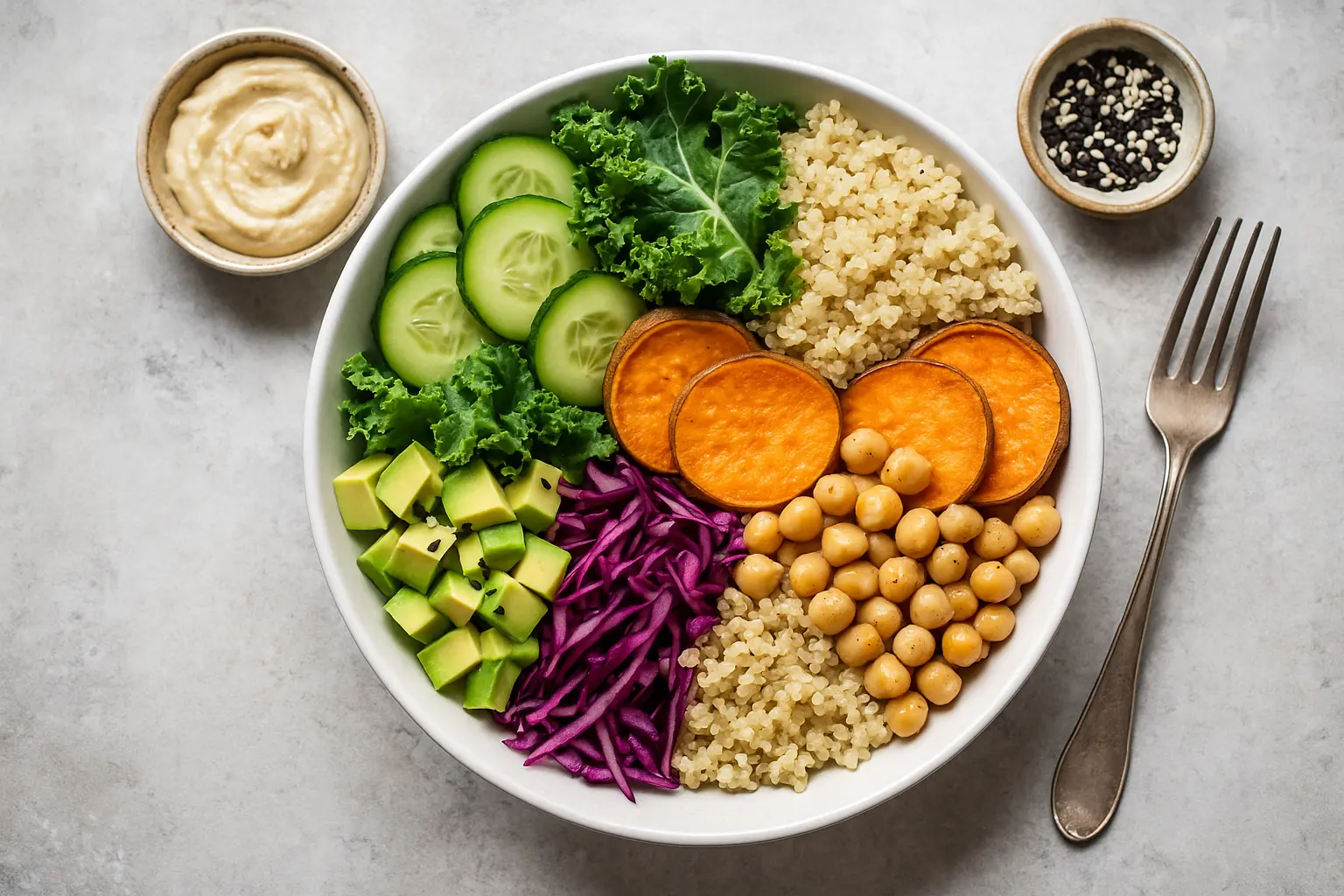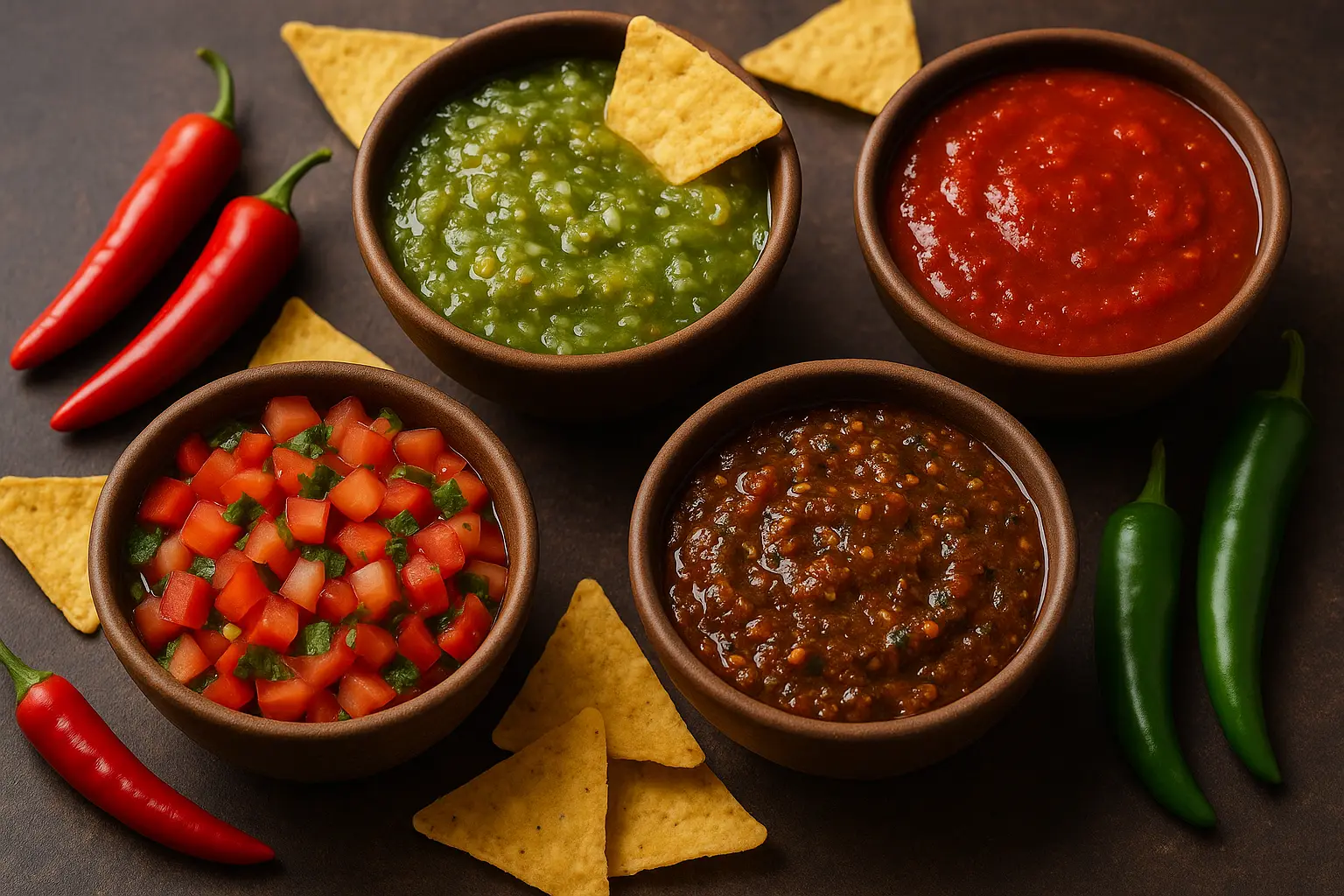When you think of Indian soups, two dishes immediately come to mind—dal and rasam. These classics are cornerstones of Indian households, offering warmth, comfort, and nourishment. But India’s culinary landscape is far richer than these familiar bowls. From the hearty lamb shorbas of the North to the spiced tamatar (tomato) soups of Gujarat and the coconut-based broths of Kerala, India’s “soups” extend far beyond what most people expect.
In this guide, we’ll journey across India’s regions to explore lesser-known but equally delightful soups. We’ll highlight vegan and gluten-free options, unpack their cultural significance, and share easy home-adaptations. By the end, you’ll discover that Indian soups are not just pre-meal starters—they are stand-alone, wholesome meals, blending nutrition with centuries of tradition.

Section 1: What Makes Indian Soups Unique?
Unlike Western soups, which often rely on cream or stock, Indian soups are layered with spices, lentils, herbs, and seasonal vegetables. They are:
Spice-driven: Flavor is built with tempering (tadka) of mustard seeds, cumin, curry leaves, and aromatics.
Nutritionally dense: Many soups serve as one-pot meals with proteins, carbs, and healthy fats.
Culturally rooted: Each soup reflects the local produce and Ayurvedic principles.
While dal and rasam are iconic, soups like shorba, yakhni, mulligatawny, thupka, and sol kadhi are equally integral.
Section 2: Regional Indian Soups You Need to Know
2.1 North India – Hearty & Warming
Tamatar Shorba (Tomato Shorba): A tangy, spiced tomato soup often served with coriander. Vegan, gluten-free, and perfect for winter evenings.
Yakhni Shorba (Kashmir): Traditionally a meat-based broth, but vegetarian versions use yogurt and aromatic spices like fennel and cardamom.
Palak Shorba (Spinach Soup): Rich in iron and fiber, blended spinach with ginger, garlic, and tempered cumin.
2.2 West India – Tangy & Cooling
Kokum Saar (Goa & Maharashtra): A sour, tangy kokum-based soup flavored with curry leaves. Vegan and excellent for digestion.
Sol Kadhi (Maharashtra & Konkan Coast): Coconut milk blended with kokum, slightly pink in color, served chilled as a summer soup.
2.3 South India – Spice-Laden & Comforting
Mulligatawny Soup (Tamil Nadu): Literally “pepper water,” it’s a spiced lentil-vegetable soup often adapted globally. Vegan versions replace cream with coconut milk.
Vegetable Kozhambu (Tamil Nadu): A tangy tamarind broth with vegetables, akin to a thin soup.
Thakkali Rasam Variants: Tomato-based soups with regional spice blends—distinct from the classic rasam.
2.4 East India – Light & Subtle
Machher Jhol Broth (Bengal): A fish-based light curry that doubles as a soup when thinned.
Vegetable Clear Broths (Odisha & Bengal): Often with bottle gourd, pumpkin, and drumstick leaves.
Chhena Jholi: A light broth made with fresh curdled milk solids, turmeric, and mustard seeds.
2.5 Himalayan Belt – Fusion of Indian & Tibetan Traditions
Thukpa (Northeast & Ladakh): A noodle-based soup influenced by Tibetan cuisine. Vegan versions swap meat with tofu and vegetables.
Gyathuk (Sikkim): A hearty noodle soup flavored with ginger and garlic.
Section 3: Spotlight on Vegan & Gluten-Free Indian Soups
Most Indian soups naturally align with plant-based eating. Here are some of the best vegan and gluten-free bowls:
Lauki Shorba (Bottle Gourd Soup): Cooling and light, with Ayurvedic benefits for digestion.
Carrot-Ginger Soup with Indian Spices: A fusion of Indian tadka with Western puréeing techniques.
Sweet Corn Shorba: Thickened with corn purée, not flour, making it gluten-free.
Beetroot Rasam: A modern twist, earthy and tangy.
Cabbage Pepper Shorba: Black pepper balances cabbage sweetness; excellent for colds.
Section 4: Indian Soups for Health & Healing
Indian households often turn to soups as home remedies:
Pepper Rasam: For sore throats and colds.
Garlic-Turmeric Shorba: For immunity boosting.
Moong Dal Clear Soup: For light digestion during recovery.
Coriander Clear Soup: Detoxifying and hydrating.
These soups are not just meals—they are medicinal. Ayurveda emphasizes balance, and soups are customized to body types (doshas).
Section 5: Modern Twists & Fusion Soups
Chefs are re-imagining Indian soups with global techniques:
Roasted Pumpkin Shorba with Garam Masala
Miso-Spiced Mulligatawny
Broccoli-Coconut Soup with Curry Leaves
Lentil-Quinoa Rasam for protein-rich vegan diets.
These versions retain Indian spice DNA but appeal to health-focused, modern palates.
Section 6: How to Cook Indian Soups at Home
6.1 Key Techniques
Tadka (Tempering): Heat ghee/oil, add mustard seeds, cumin, curry leaves, pour over soup.
Slow Simmering: Allows spices to infuse deeply.
Blending: Many shorbas are blended for smoothness.
6.2 Essential Spices for Indian Soups
Cumin & coriander powder
Turmeric (anti-inflammatory)
Black pepper (warming)
Hing (asafoetida – digestive aid)
Curry leaves (aromatic)
6.3 Pantry Staples for Soup Base
Tamarind pulp
Coconut milk
Lentils (moong, masoor, toor)
Seasonal vegetables
Section 7: Sample Recipes
7.1 Tomato Shorba (Vegan, Gluten-Free)
Ingredients
Tomatoes – 6
Garlic – 3 cloves
Ginger – 1 inch
Cumin seeds – 1 tsp
Coriander leaves – handful
Salt & pepper to taste
Method
Roast tomatoes, ginger, and garlic.
Blend into smooth purée.
Temper cumin in oil, add purée, simmer with water.
Garnish with coriander.
7.2 Beetroot Rasam
Ingredients
Beetroot – 2 (boiled, puréed)
Tamarind water – 1 cup
Black pepper – ½ tsp
Curry leaves – 10
Mustard seeds – ½ tsp
Method
Heat oil, add mustard, curry leaves, and pepper.
Add tamarind water, beet purée, salt.
Simmer for 10 minutes.
Serve hot with rice or as soup.
7.3 Thukpa (Vegan Version)
Ingredients
Rice noodles – 1 cup
Mixed vegetables – 2 cups
Garlic & ginger – 2 tsp
Soy sauce – 1 tbsp
Chili flakes – ½ tsp
Method
Sauté garlic and ginger.
Add vegetables, soy sauce, chili, and water.
Simmer 10 minutes. Add noodles.
Serve garnished with spring onions.
Section 8: When & How to Serve Indian Soups
As Starters: Tamatar shorba or kokum saar before meals.
As Main Meals: Thukpa, mulligatawny, or moong dal soup with flatbread.
As Healing Tonics: Garlic-pepper rasam for sick days.
Seasonally:
Winter – hearty lentil shorbas.
Summer – sol kadhi or cucumber soups.
Monsoon – peppery rasam for colds.
Section 9: Soup Pairings with Indian Food
Shorba + naan or kulcha
Rasam + steamed rice
Sol kadhi + light sabzi
Thukpa + momos
Beet rasam + millet flatbreads
Section 10: Final Thoughts
Indian soups are diverse, adaptable, and deeply nourishing. Beyond dal and rasam lies a universe of broths, shorbas, and concoctions that carry stories of regions, seasons, and families. Whether you’re vegan, gluten-free, or simply curious, there’s an Indian soup for every table and every mood.
By exploring these recipes, you not only expand your culinary repertoire but also connect with India’s rich food heritage. So the next time you crave soup, skip the predictable and let your ladle discover the soulful diversity of Indian soups beyond dal and rasam.
Leave a comment
Your email address will not be published. Required fields are marked *




















